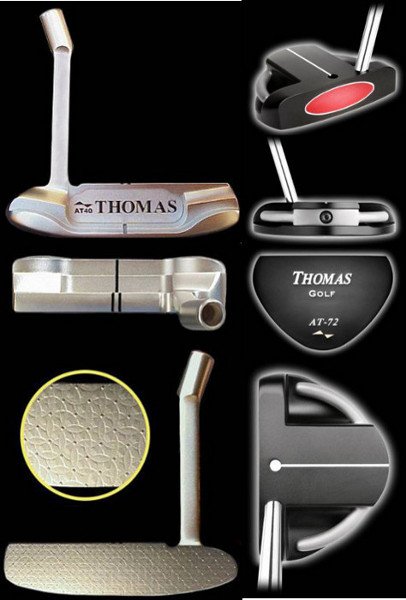
It’s the one club you are (almost) guaranteed to use every hole. In our distance-obsessed times with the focus on drivers and the longest golf balls, consistently holing the three foot putt is an underrated commodity. The fact is a player who can cut down on his three puts and make three-quarter of three foot putts can shave lots of strokes off of their 18-hole scores.
And, as an added bonus, putters don’t fetch the same price tags new drivers do – unless you really want to go crazy. Still, there is a huge variety of putters to choose from and many golfers seem hesitant to try anything new. That’s too bad, because matching up your personal stroke to the right putter is one of the single best ways to shoot consistently lower scores.
Finding the correct length putter is a key first step. Getting the proper fundamentals of your eyes lined directly over and slightly behind the ball and your hands under your shoulders is a great set-up position. Depending on your build, a standard length putter may be just right, but for many players it may be too short or too long. If you find yourself gripping down closer to the shaft, your putter may be too long. If you are holding the extreme top of the grip, it’s probably too short. Many teaching pros believe a lot of golfers have putters that are too long. It is also important to make sure the weight of the putter matches up with the shaft length, so if you increase or decrease the shaft length make sure to make the corresponding change in the club’s weighting.
Finding the right putter head is really a matter of personal choice. Part of this may depend on your actual stroke. Putting strokes can generally be categorized as “square”, meaning the putter head stays generally square during the entire stroke or “arc” putting, where the putter blade opens slightly on the way back and closes on the through stroke.
Many short-game gurus believe a mallet-style putter is the best choice for square putting styles whereas a blade-style putter is the best choice for arc putters.
The last big consideration choice for type of putter deals with where the shaft attaches to the putter head. Until the early 1950’s, center-shafted putters were banned by the R&A, while they remained legal and even commonplace in the U.S. The R&A relented to help unify the rules of golf.
The putter, obviously, is the only club that isn’t required to have its shaft attached to the heel of the club face.
Center-shafted putters are typically face-balanced, meaning the weight is evenly distributed between the heel and toe of the club. Square putters believe that these face-balanced putters are better suited to their straight back, straight through putting stroke.
The other option is heel-shafted putters, which distribute more weight to the toe of the club. Many believe heel-shafted putters are a better fit for arc putters who move the putter head inside on their backswing, slightly opening the club and close it back to square on the way through.
The majority of players on the PGA Tour use heel-shafted putters, but there are a handful of big name players who employ the center-shaft. The principle argument for the center-shafted putter is the belief that it increases the likelihood of squaring up the putter face at impact.
The bottom line is you can’t be afraid to take a few demonstrator models out to the practice green and find the one that combines the best feel, with consistent center-strikes that get the ball started on your intended line.





